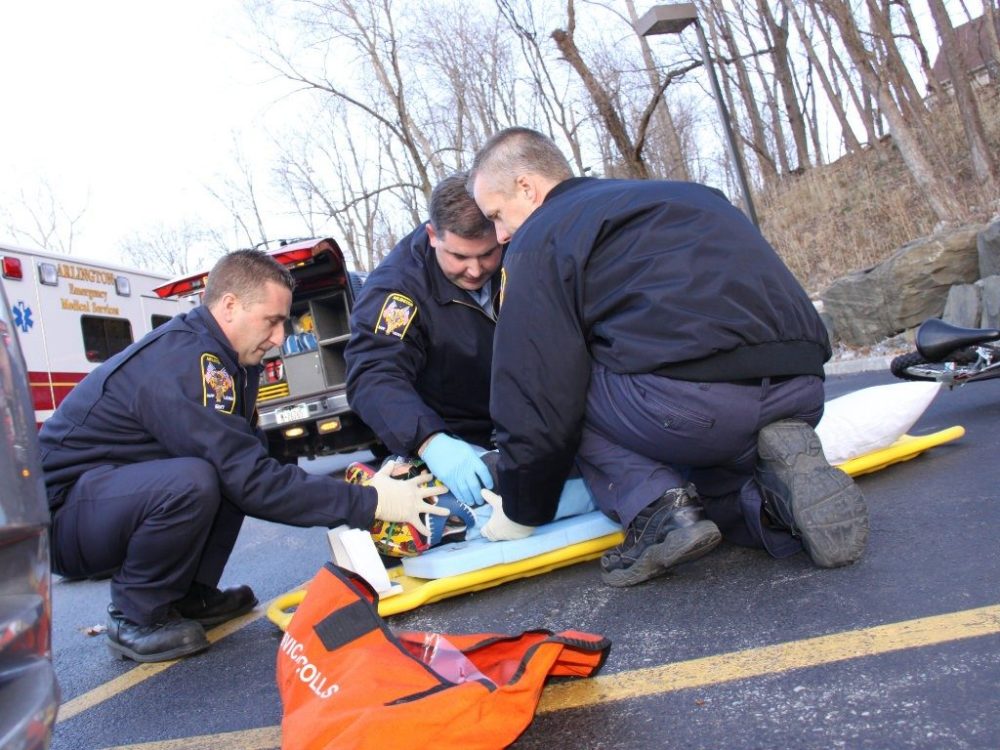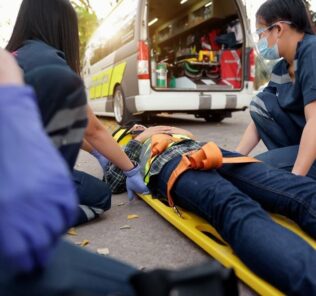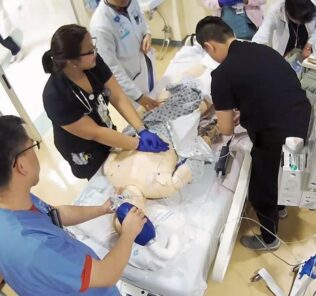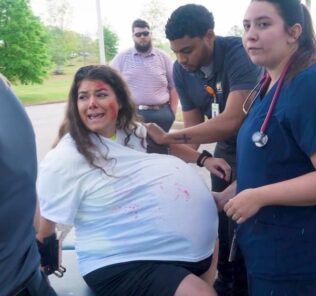NAEMSE Plenary: Laerdal Supported Research Study of Simulation Education in EMS
*Update*: Full article now available here.
This weekend HealthySim attended NAEMSE in Reno, NV and sat in on Saturday’s Plenary Session entitled “Simulation in Paramedic Education: Survey Says!” which was presented by Kim McKenna, M.Ed. RN EMT-P, Director of Education St. Charles County Ambulance District, St. Peters, MO. Other authors of the soon-to-be published work included: Elliot Cahart, Daniel Bercher, Andrew Spain, John Todaro and Joann Freel.
This research project was supported by Laerdal Medical in an attempt to explore simulation utilization in EMS programs similar to the national research landmark study of simulation in nursing education recently published by the NCSBN.
Sponsored Content:
Plenary Session Description: Simulation is an increasingly important strategy in EMS education. EMS program faculty and administrators face growing challenges to promote student learning and to demonstrate student competence. This, coupled with budgetary challenges and clinical and field resource limitations, has led EMS educators to ask how simulation can be used to enhance, or replace traditional learning experiences. Yet little is known about simulation in EMS. Attend this session to hear what the research says. The NAEMSE Research Committee conducted a study to characterize the use of simulation in initial paramedic education programs. This session will present the findings detailing the simulation resources that paramedic programs have and provide a comparison between how they are used. It will also provide a look into faculty perceptions regarding simulation, and importantly, it will shed light on program characteristics that influence the use of simulation.
We already know that healthcare simulation:
- Simulation can improve knowledge and skills (Dickison, 2010),
- It may reduce error rates in trauma performance (Wyatt 2004),
- Some allied health research shows equivalent results when simulation was substituted for some clinical (Hayden 2014).
In EMS we also know:
- Less than 8% of paramedic students met at DOT specific assessment and skills requirements for clinical field.
- Less than 50% met required assessments for psychiatric, pediatric respiratory distress, and & OB patients or on ventilating non-intubated patients. (Saizman, 2009)
- Access to OR for live intubation is also limited (westergard 2013)
Survey was designed to characterize the use of simulation in EMS education:
Sponsored Content:
- What simulation resources do paramedic programs have?
- What simulation resources do programs USE?
- What differences exist between the resources used and using now?
- What were the faculty opinions regarding simulation?
While I cannot share the results of the survey here yet as the research is about to be published, I was given permission by Kim to share the content of their poster entitled “Sharing Simulation Resources is Associated with Less Frequent Use of Simulation in Accredited Paramedic Programs”, which covered a section of the research:
Poster Results:
The survey was sent to 638 paramedic programs. We received 389 responses (61%). Nearly all th programs reported that they have task trainers (100%), simple manikins (08%), and intermediate manikins (95%). Fewer programs reported having advanced manikins (76%), standardized patients (58%), computer-based simulation (45%), and virtual reality (8%). A series of Pearson Chi-Square analyses showed that program that reported “having access to” a given simulation resource use that resource less frequently that programs that reported ‘having” that same resource.
Conclusions:
Initial paramedic programs that share or borrow simulation resources use them less frequently than those that have dedicated resources. These findings have significant practical implications and highlight a major limitation of sharing simulation resources.
Kim shared EMS will need evidence to guide when it is appropriate to substitute simulation for clinical/field, a body of knowledge on best practices for EMS and will also need to find ways to network and mentor each other. I shared with Kim that the barrier of “simulation technology training” could be overcome through the non-profit organization SimGHOSTS.
Stay tuned for the full survey results to be published soon and visit NAEMSE for more great event recaps!
*UPDATE*: Full Article now released here!
Lance Baily, BA, EMT-B, is the Founder & CEO of HealthySimulation.com, which he started while serving as the Director of the Nevada System of Higher Education’s Clinical Simulation Center of Las Vegas back in 2010. Lance is also the Founder and acting Advisor to the Board of SimGHOSTS.org, the world’s only non-profit organization dedicated to supporting professionals operating healthcare simulation technologies. His co-edited Book: “Comprehensive Healthcare Simulation: Operations, Technology, and Innovative Practice” is cited as a key source for professional certification in the industry. Lance’s background also includes serving as a Simulation Technology Specialist for the LA Community College District, EMS fire fighting, Hollywood movie production, rescue diving, and global travel. He and his wife Abigail Baily, PhD live in Las Vegas, Nevada with their two amazing daughters.
Sponsored Content:





















